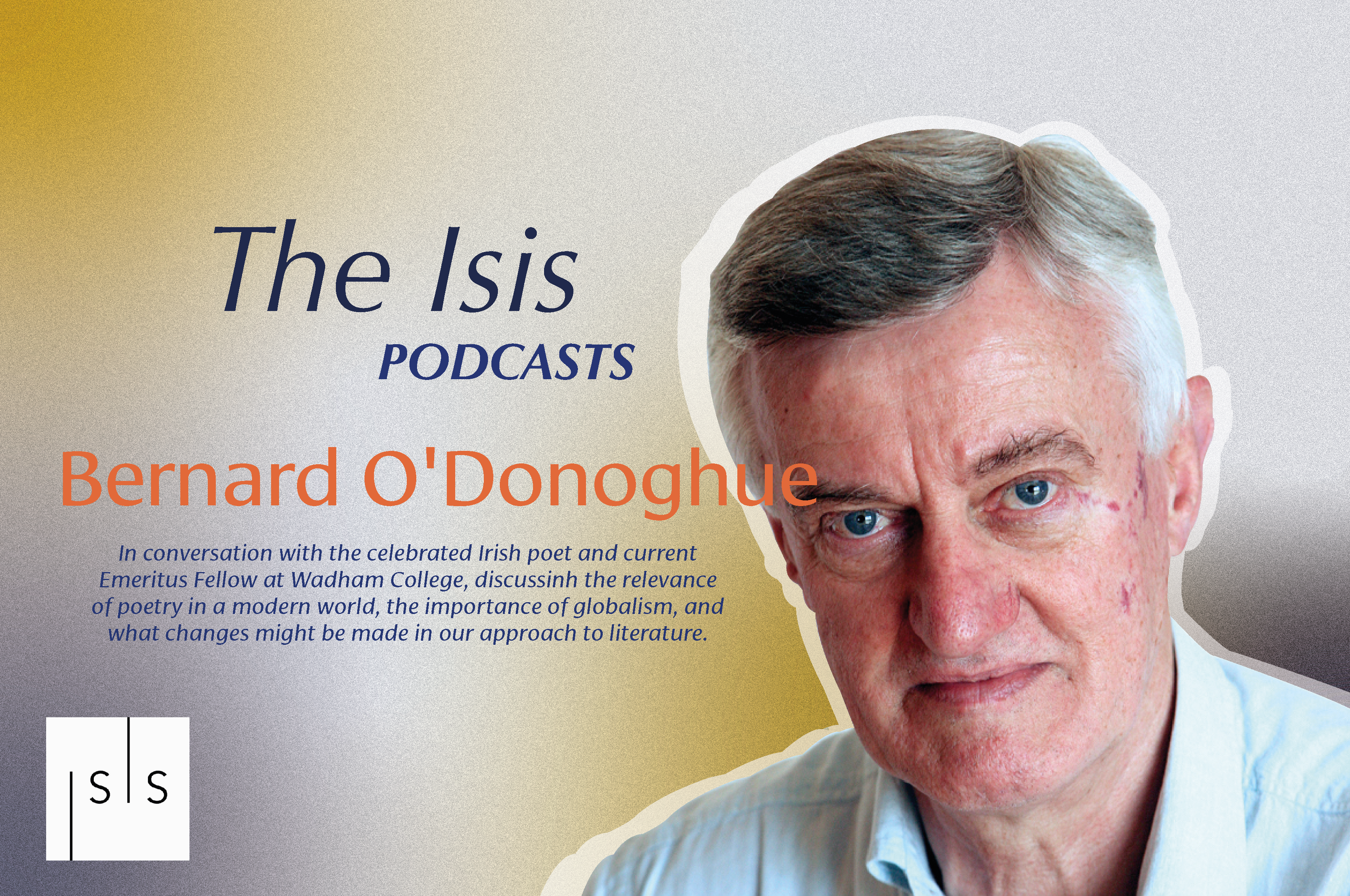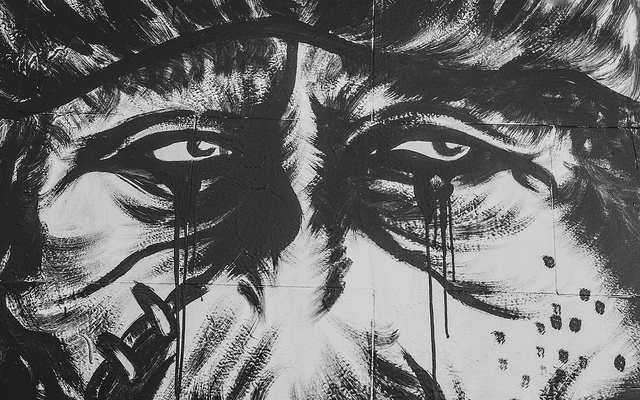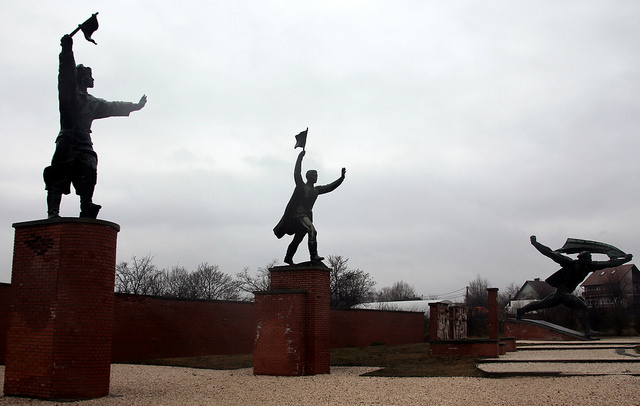
Invisible by Design: Druidism in Modern Britain
On a blustery winter day, I went to visit Glastonbury, really for no other reason than that I hadn’t been before. I expected a small slumbering town, a few twee cafes, maybe a garden centre. But the town was buzzing. The cafes were vegan and the most prevalent shrub, it was plain to smell, was marijuana (it’s even in the town’s floral displays). This bucolic corner of fair England is home to a buzzing New Age community. All varieties of belief and lifestyle – so long as your parents have never heard of it – find representation here. A safety equipment supplier is called Sacred Moon. A laptop repair shop is called Zen. There is a shop “for all things Viking”, and it is the only place I’ve been that has a witchcraft emporium and a magical apothecary. The town is a fantastical postmodern cocktail where Ashtanga yoga links arms with Wicca, where hexes and mantras make sense together.
While we were having lunch, we got talking to a lovely pair of Druids eating at the next table. One of the most prominent pagan religions, Druidism boasts a sizable population in Glastonbury; they are drawn in by the trove of lore and myth attached to the place. A Druid called King Arthur Pendragon even lives here. After the ‘pagan boom’ of the nineties, there were 30,000 Druids in both the UK and the U.S., and the numbers are growing. In the most recent census, 74,000 people identified as pagan in England and Wales. I had some foggy recollection of solstice ceremonies at Stonehenge from an article somewhere in the media scrapheap. But somehow, I’d never really appreciated Druidry as an everyday reality. I didn’t conceive of Druids as regular people, possessing digestive tracts, who occasionally go out for lunch, and who you might spot munching on a dahl.
In fairness, you’d be forgiven for missing this way of life entirely. Druids are invisible by design: according to the 2018-2020 World Druidry Survey (the first of its kind), they do not proselytise and 74% of Druids actively work to keep their spiritual practices private. One motivation is that exactly the same percentage report discrimination and persecution within their local communities, but it is also a voluntary recoil from the perceived toxicity of mainstream culture. Theystick to the social hinterland because they find its centre both threatening and repulsive.
That recoil is often initiated by a feeling of ‘homelessness’ in the modern world. We were once closely tied to the land that fed us and the people who worked it. These connections, nurtured over centuries, held us in place. Mass industrialisation violently uprooted these bonds and social relations have since become shapeless and volatile. Everything sacred is debased, all values reduced to a market value, everything built is built to be torn down. Our society is seen as spiritually derelict and materially omnivorous: the natural world is treated as an expendable resource and growth as potentially infinite. Druidry seeks to redress this disharmony by going back to before these toxic attitudes accreted, when our early spirituality was fed by just sky and sea. Druids find inspiration in the slow and ancient traditions of these isles that venerated the Earth and our ancestors. For those who practice, it means “finding our way home.”
Nonetheless, it is a new and obscure faith. Yes, there were neolithic Druids, but there is no historical continuity. And as an oral tradition, everything we know about the ancient order is salvaged from Roman records, which ceased in the 2nd century BCE. Modern Druids don’t cling to the scant historical facts provided there: they romanticise the ancient Druids and fill in the capacious blanks imaginatively. Druidry consciously constructs itself, freely drawing from multiple cultural sources, without undermining the sincerity of the faith.
There are more conventional and culturally available channels of salvation for the lost and disillusioned to turn to. If Druidry is on the up, it is because for whatever reason these channels are no longer attractive. John Greer, former Archdruid of America and prolific blogger, finds a correlation between a rise in occult interest and growing disillusionment with the political order. When the political realm shrugs and turns its back, more will look to the spiritual realm for answers. While the traditional Christian Church would have seemed the first spiritual port of call for a culture lost at sea, it has ceased to be an appealing option for many. Intertwined with a history of oppression and exploitation, and shackled by antiquated doctrine, the Church has lost much of its moral and theological credibility. The flock is wandering from its shepherd, and those who still have a spiritual appetite look to graze in pastures new.
Druidry has a versatility that the traditional Church lacks. It is not centralised: the World Druidry Survey identified 147 groups internationally, and while most nominally belong to a group, 92% of Druids are solitary practitioners, worshipping at a home shrine or in their garden. Its tenets haven’t really been nailed down, which gives space for inventiveness and difference. One practitioner shares a standing joke amongst Druids on his popular blog: if you ask ten Druids to define Druidry, you get eleven different answers. No other established religion accommodates such diverse theological perspectives. Members identify as pantheists, polytheists, duotheists, or monotheists. Others refuse to ascribe any one conception to an essentially unknowable deity. There is no predesignated pantheon of deities to worship; Druidic belief is plural and diffuse, spokes without a hub.
This is not accidental. Druids feel no need to cling to ironclad doctrine. The freedom and manoeuvrability afforded by ambivalence is recognised as a selling-point and something to be treasured. Indeed, most Druids don’t subscribe to religious terminology, seeing Druidry as both more encompassing and less prescriptive. They prefer terms such as ‘life path’, ‘culture’, or even just ‘point of view’. The spirituality of a Druid may crystallise not as a set of ideas or precepts, but as a “a stance, an attitude, a particular mode of experience and perception”, as the anthropologist Thornstein Geiser puts it. The particular manner of one’s faith is a highly personal and intuitive matter. Group leaders would never dream of imposing a rule or belief that isn’t seized by the individual from within: if something doesn’t quite mesh with the cut of your feeling, leave it out.
This quality of openness extends to Druidry’s commerce with other belief systems. The renowned Druid Ross Nichols once told students not to mix their drinks, but a great deal of drink-mixing seems to be going on now: 46% of Druids merge their practice with other religious traditions, most commonly shamanism, Buddhism, Christianity, and Wicca. Phillip Carr-Gomm, who was the longstanding chief of the world’s largest Druid order, likens self-enclosed religious systems to a kind of “monoculture,” which he says can degenerate into fundamentalism and dogma. He encourages “seed-exchanges” such that we can “grow” our spiritual garden more effectively. Not all ideas can be transplanted, but where they can, we can use them to enrich our own path. It is the same outlook that pervades Glastonbury. Druidic belief is conceived not as a fortress but as a marketplace – its borders are open.
While there is much internal diversity, there is also cohesion. Druidic practice constellates around a few stable, shared beliefs loosely inspired by the neolithic order. Most significantly, in Carr-Gomm’s words, it is a geocentric rather than an anthropocentric religion. We, as humans, get no special privileges in the great scheme of life. This basic stance reverberates throughout the lives of Druids: in most Druidic homes you will find a shrine honouring one’s family and heritage, while popular pastimes include foraging, permaculture farming, conservation, and (unsurprisingly) environmental and animal activism. King Arthur, for instance, is a self-described eco-warrior leading the Loyal Arthurian Warband, which their website claims are the “fighting arm” (protest group) of the pagan movement. Similarly, a Facebook group called Warrior’s Call declares themselves “pagans united against fracking”.
Druids generally believe that our souls are immortal and undergo endless reincarnations, although not always in human form – some maintain you could return as a pebble. Between incarnations, our souls rest in the Otherworld, so Druids celebrate death as a birth in this other realm. Then again, Druids think religion shouldn’t be fixated on some transcendent world beyond the horizon of experience but should appreciate the Divine as it is revealed through the objects and landscape around us. The physical universe is no less sacred than the spiritual. A huge point of contention with Christianity, therefore, is its obsession with Heaven and Hell; with Eastern philosophies, it is their denial of the absolute reality of the observable world. Vedantic Hindus regard it as illusory and Madhyamika Buddhists as “empty of substance.”
While meaning is transmitted rationally through philosophical and theological concepts, Carr-Gomm argues it is also passed along “transrationally” through story, legend, and ritual. Meditation, especially in natural spaces, is called the path of the Ovate. Where other meditative practices aim towards a transcendental experience of a higher reality or inner self, Druidic meditation is situated and embodied: feeling the dirt under your toes, noticing the smell of coming rain, or listening to the whistle of the wind. Through this highly attuned “presentness”, Druids seek a deep commune with nature, the stars, the leaves, and the trees, all of which have secrets to tell. They disclose a rhythm written deep into the way of things, a pattern of contraction and release, holding and letting go. The Druidic universe is cyclical: this pattern is mirrored in the pagan eightfold calendar, the circles Druids gather in, the way time passes like the turning of the wheel.
Equally important is creative expression, or the path of the Bard, which most Druids view as central to human existence. The concept of Awen, a Welsh word meaning ‘flow’, is crucial here. For Druids, Awen is like an elixir that you can stimulate within you. When you are in the middle of creative activity, there are no propositional thoughts or conscious decisions – there is not really any intellectual activity at all. Some Druids believe Awen flows to us from the Otherworld. The Bard is able to harness it expertly and channel it into expressive works such as poetry, dance, music, or storytelling. As with the Ovate, it is a sort of entrainment with the rhythms of the world that can elevate and edify us.
Druids trade in ambivalence rather than absolutes. They inhabit a penumbral world of half-concealed ancient truths, plural cosmologies, miscible faiths, concepts spilling into one another. It is part of its success that its beliefs haven’t been hammered perfectly into shape. We live in a world where increasingly nothing quite makes sense on its own, and we must find our own ways to comprehend it. The death knell of climate disaster amplifies the call to environmental responsibility. The noise of modern life underscores the value of quiet contemplation and humble living. Druidry has never been more attractive.
It might seem strange to us that the faith of the moment should take its inspiration from one from 2,000 years ago. But it won’t seem strange to a Druid; it is just another manifestation of the underlying cyclicality of all things. As the Druid author Cairistiona Worthington has said, “the great tree thrives on the leaves it casts to the ground.” Nurtured by the ways of old, today’s Druids are the new season’s growth. And I certainly hope I find myself eating next to Druids more often in the future. ∎
Words by Rory Kinlan. Art by Dowon Jung.







